The Pioneer Pump House
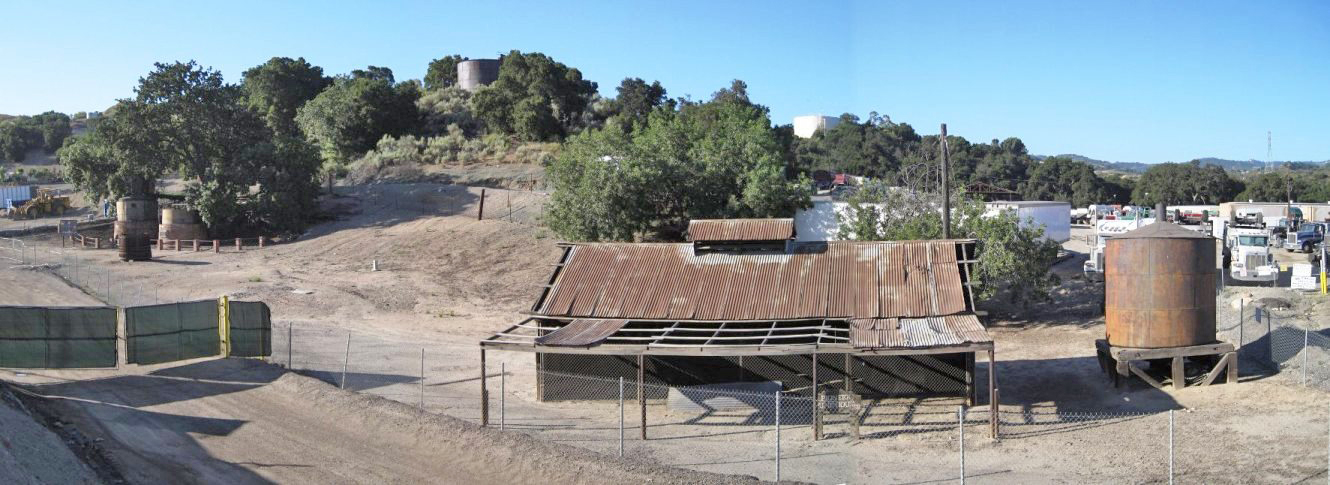
The Pioneer Pump House (foreground) on the site that also contains the Pioneer Oil Refinery (in the left background). All the tanks were used with the refinery and had nothing to do with the pump house. (View toward the south) (Photo taken on 6/20/2010)
The Pioneer Pump House is located on the northwest corner of the Pioneer Refinery site just east of Pine Street south of Newhall Avenue. This area is known as Elayon, the name of the train siding there. It was used to pump water to Pico Canyon. The water came from a spring that was located east of the refinery. The pump house, also known as the water plant, was built by the Standard Oil Company, but we don't really know when. The engine is a 1908 model, so the pump house was built after 1908. This was long after the refinery (built in 1877) was taken out of operation (which was probably 1888), so they could have built it anywhere on the refinery site without worrying about interferring with the operation of the refinery.
The refinery was restored in 1930 and named the Pioneer Oil Refinery. The pump house was still in operation so it was left alone.
Few newspaper stories mentioned the pump house. Here are three:
The Signal, April 10, 1930:
"The Globe Lease and Royalty Company is preparing to drill on the southwest corner of the Bates tract, opposite the Standard Oil pumping station, on the east side of Railroad Canyon."
The Signal, May 29, 1947:
"Thursday an overheated electric motor started a fire in the Standard Oil pump house in Railroad canyon. Damage to the motor wiring was placed at $500."
The Signal, November 25, 1954 (in The Story of Our Valley, by A.B. Perkins) reported that it was still being used in 1954:
"In the days of the Southern Hotel and Main St., the Newhall interests had a two-inch pipeline from the Southern to a big spring in Railroad Canyon, where today the Standard Oil Co. maintains a pumping plant for Pico."
Greg Johnson, with a group of friends, salvaged some of the old engines from Pico and Wiley Canyons in 1974 and 1975 under the eye of Frenchy Lagasse, the Standard Oil Pico oil field foreman at that time. Greg has been working on, and restoring, antique engines for over 50 years. He returned to Pico Canyon in April of 2013, where I met him. Here is what he said about the engine in the Pioneer Pump House (in a 2021 email to me):
It has been many years since Frenchy showed us around the Pioneer Refinery. At that time the engine and pump were in a tin building. He let us in to have a close look at the machinery. The engine is a 12 HP, Fairbanks Morse type N gasoline engine. It started out running on gasoline but was converted (crudely) to run on natural gas. The original gasoline fuel pump is still on the engine and is located below the timing gear/cam assembly (no longer used). The original gasoline mixer (carburetor) has been removed from the cylinder head and there is a rectangular steel plate attached with two bolts where it was located. The box on the top of the cylinder is a pump lubricator which was supplying oil to the main bearings. The 2 green lines are actually copper oil lines. It looks like there was a thrid line that lubricated some other moving part of the engine but it is gone. This is not original to the engine. Also the original ignition system has been removed (it originally had "Make and break" ignition) and been replaced with a high tension magneto driven by a gear above the original timing gear. The magneto is the square brass piece but it is hard to tell it is brass due to corrosion. A spark plug is installed where the "make and break" ignitor was originally. The wire is still attached to the spark plug. I would expect the date of 1908 is about correct. The date the engine was made is stamped on the end of the crankshaft on the side opposite the wood flat belt pulley. I bet it is still readable. It will be the month, date and year it was made with either dashes or punch marks between the numbers.
The pump is a"Triplex" style (3 cylinders). There is no manufacturer's plate on the pump, so we don't know who built it.
The naming of the pump house to the "Pioneer Pump House" was more then likely done by Standard Oil probably in 1976 when the pump was restored. Greg Johnson does not remember the two signs (in front of the engine and outside of the pump house) being there in 1974, when Frenchy showed it to him. He could not have missed the sign in front of the engine if it was there.
Major changes are coming to the pump house and refinery property. With the beginning of grading and construction for the Center at Needham Ranch industrial park on the land almost surrounding the property, the pump house has been taken down and stored for protection. Also, all the tanks of the refinery have been moved off-site and the refinery "stabilized" in place. These tasks were done from January through March of 2021 by the Spuctrum Company. When construction is completed, the property will be turned into a historical park. Everything except the refinery itself, will be re-located to a different point on the site.
See photos of the disassembly and storage of the pump house here.
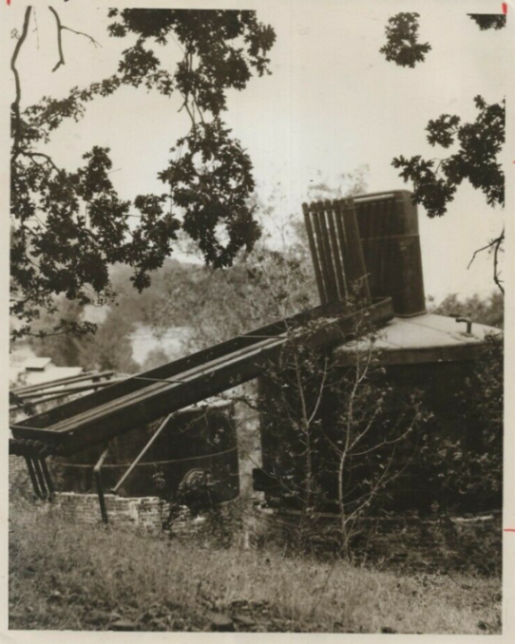
On the middle left side of this photo (from ebay) is the top of the Pioneer Pump House. The refinery still and bush sizes look very similar to a newspaper article from 1920 that only shows the still. Therefore, the date of this photo must be 1920-21.
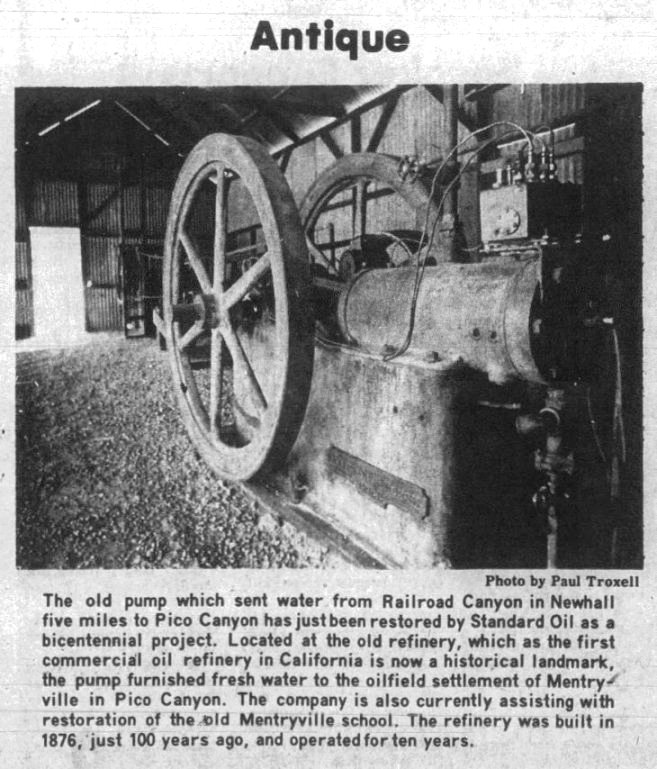
From the Signal of April 26, 1976. The article here says that the pump was restored in 1976, but the photo shows the engine for the pump. The actually pump is hidden in the background to the right of the door. Maybe the engine was restored, maybe not. The pump model is unknown, but it is a triplex (3 cylinders) type. The engine is a Fairbanks Morse type N gasoline engine that was converted to run on natural gas.
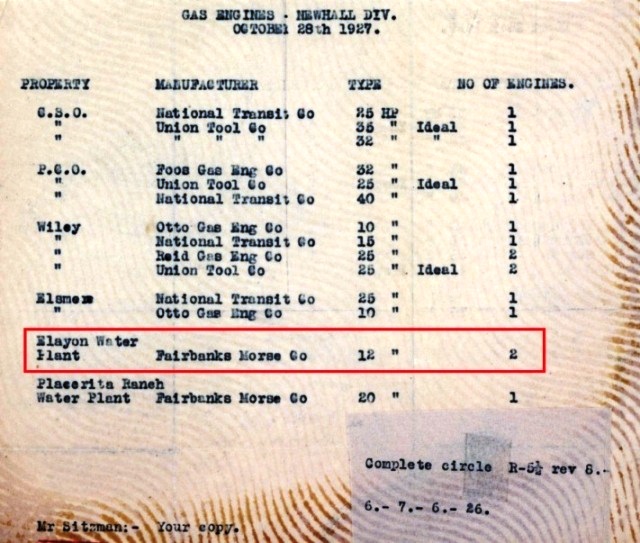
1927 Standard Oil records indicate that there were two engines at this location. Whether they both were being used at the same time is unknown. One may have just been a backup. This document is part of the Sitzman collection at the Santa Clarita Valley Historical Society. Charles Sitzman was the Pico oil field superintendent from 1927 to 1937.
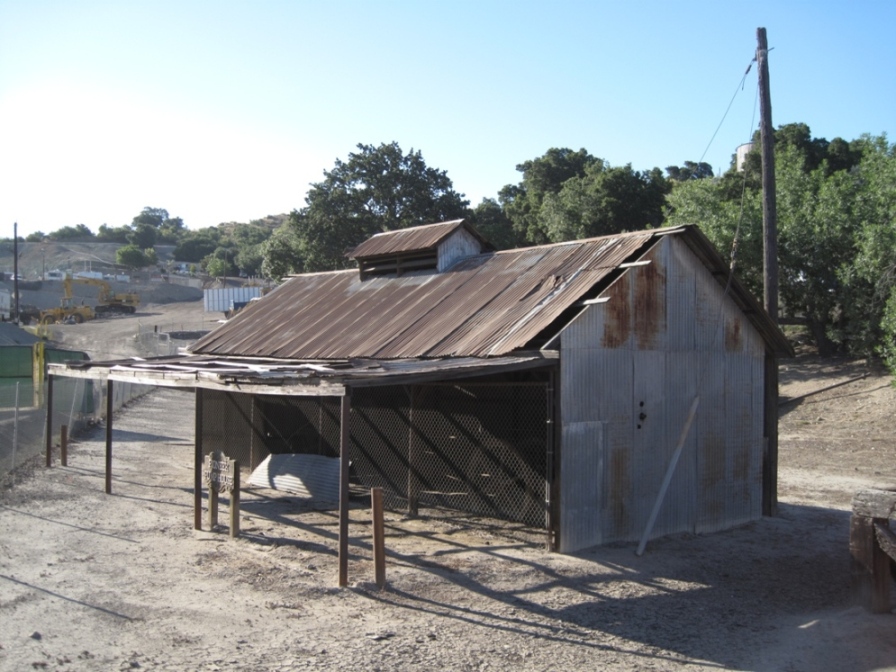
The pump house. (6/20/2010)
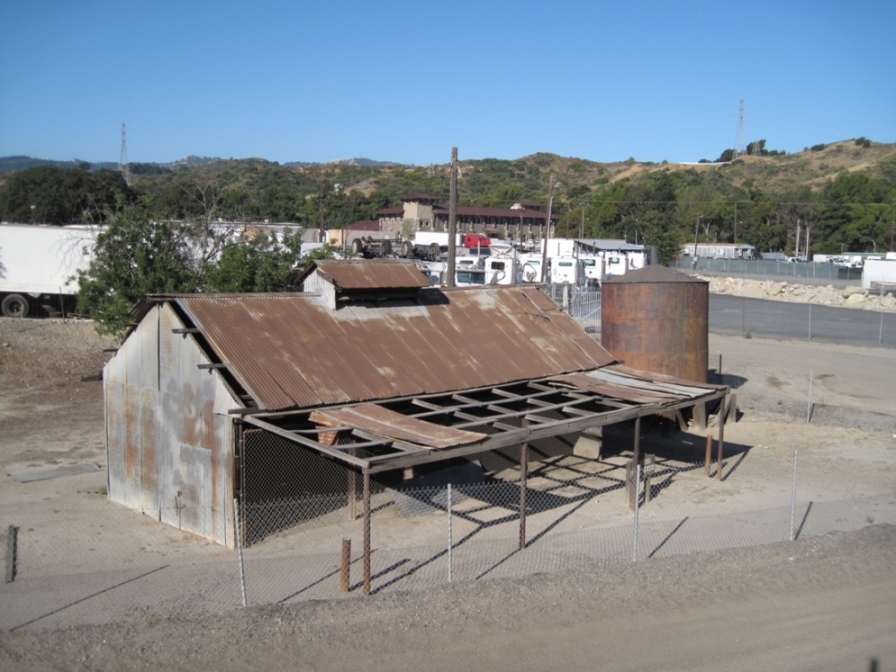
Another view. (6/20/2010)
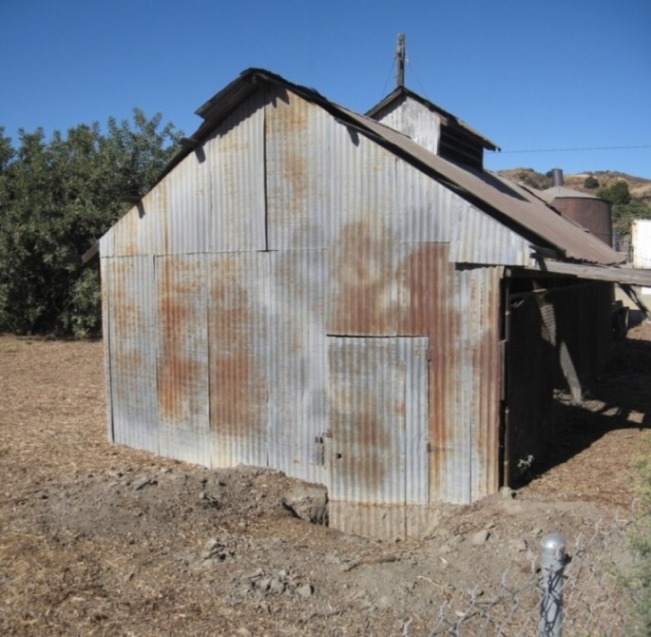
East end. So much sediment had built up over the years that a hole had to be dug to get the door open. (9/7/2019)
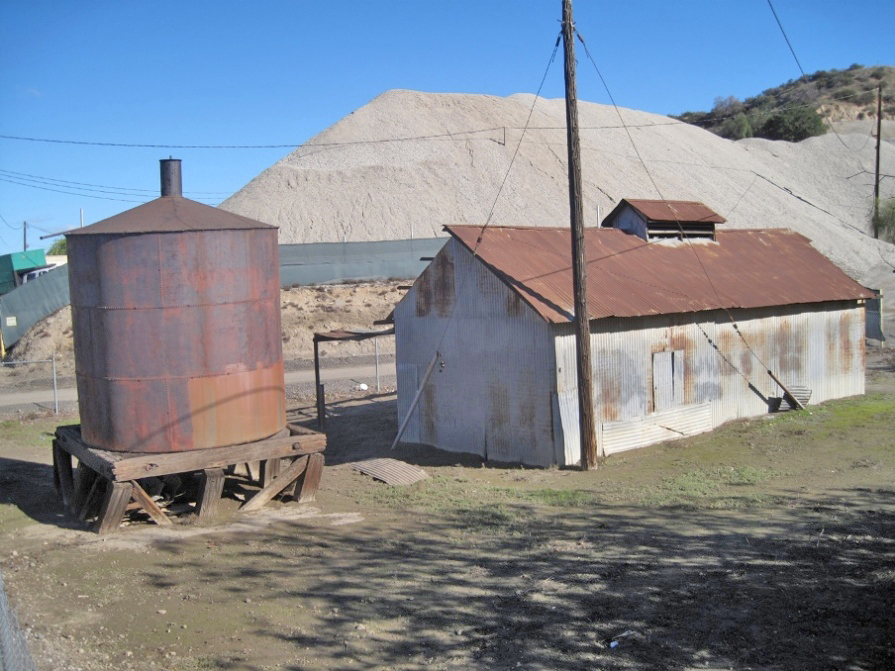
Rear. Looks there was a window or door there. That is the acid tank for the refinery. (12/24/2014)
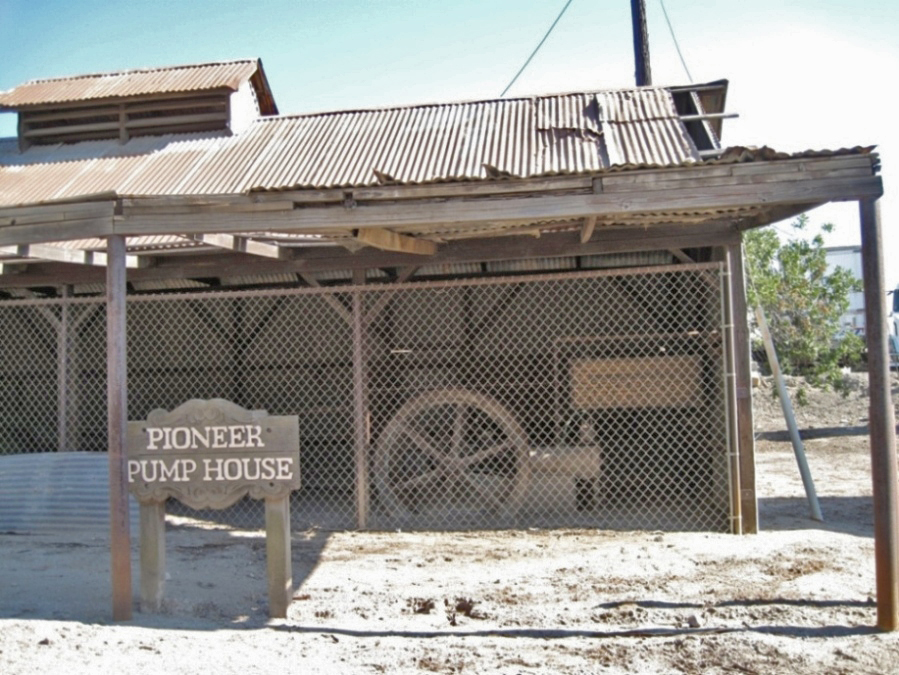
Close up of the engine. A descriptive sign is in front of the engine with the Pioneer Pump sign in front of that. (7/17/2010)
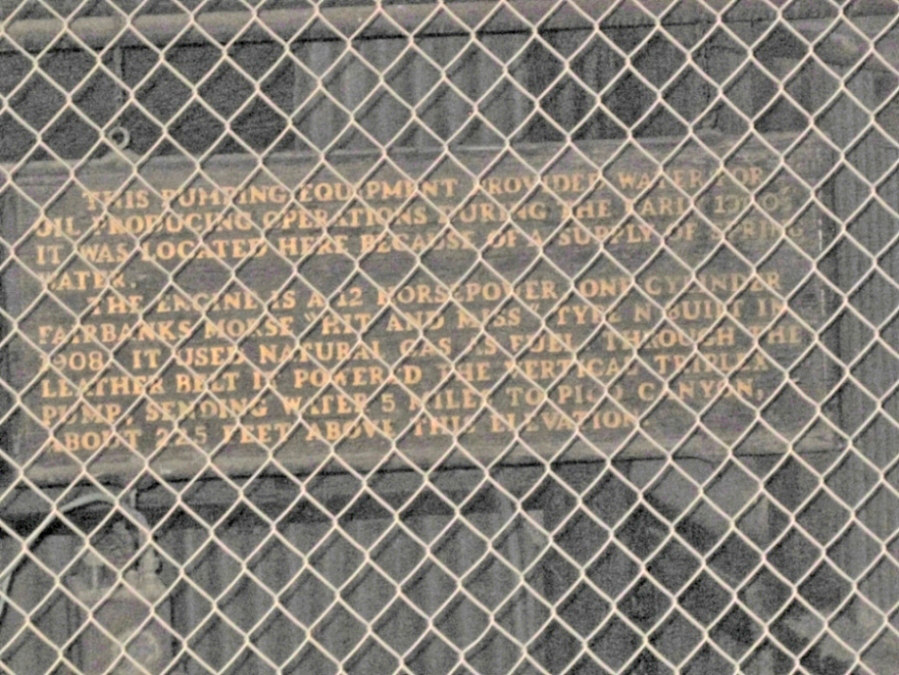
This pumping equipment provided water for
oil producing operations during the early 1900s.
It was located here because of a supply of spring
water.
The engine is a 12 horsepower, one cylinder
Fairbanks Morse "hit and miss" type N built in
1908. It used natural gas as fuel. Through the
leather belt it powered the vertical triplex
pump, sending water 5 miles to Pico Canyon,
about 225 feet above this elevation.
See here for an instruction manual for this type of engine (PDF - 2.2MB).
(7/19/2010)
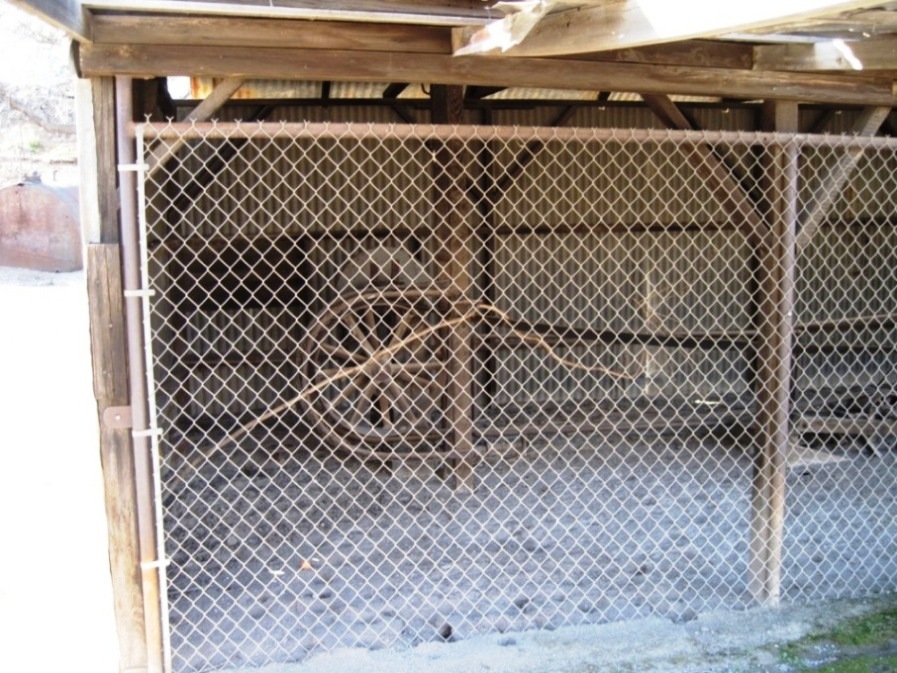
The hard-to-see pump. (2/4/2012)
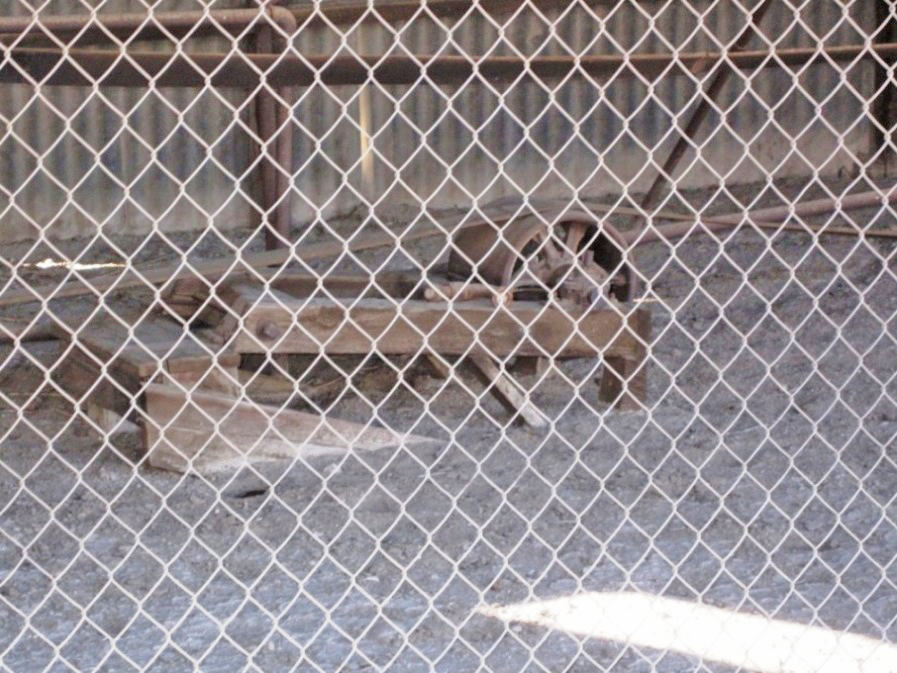
About a 12 foot belt went from the engine to the pump. Between the machines is this belt support or stretcher (2/4/2012)
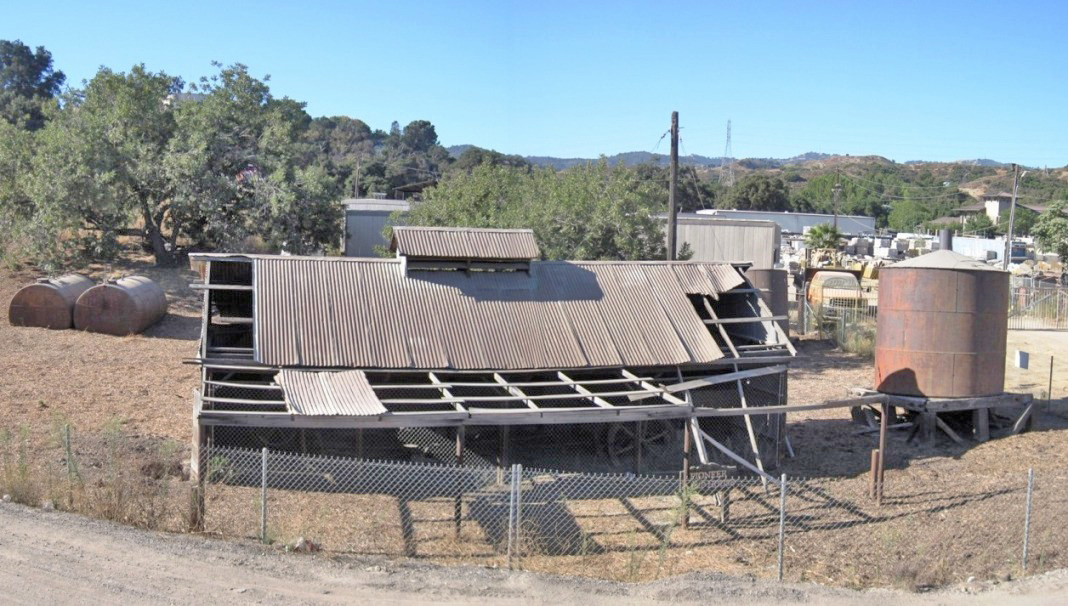
The pump house is in pretty bad shape. (9/7/2019)













